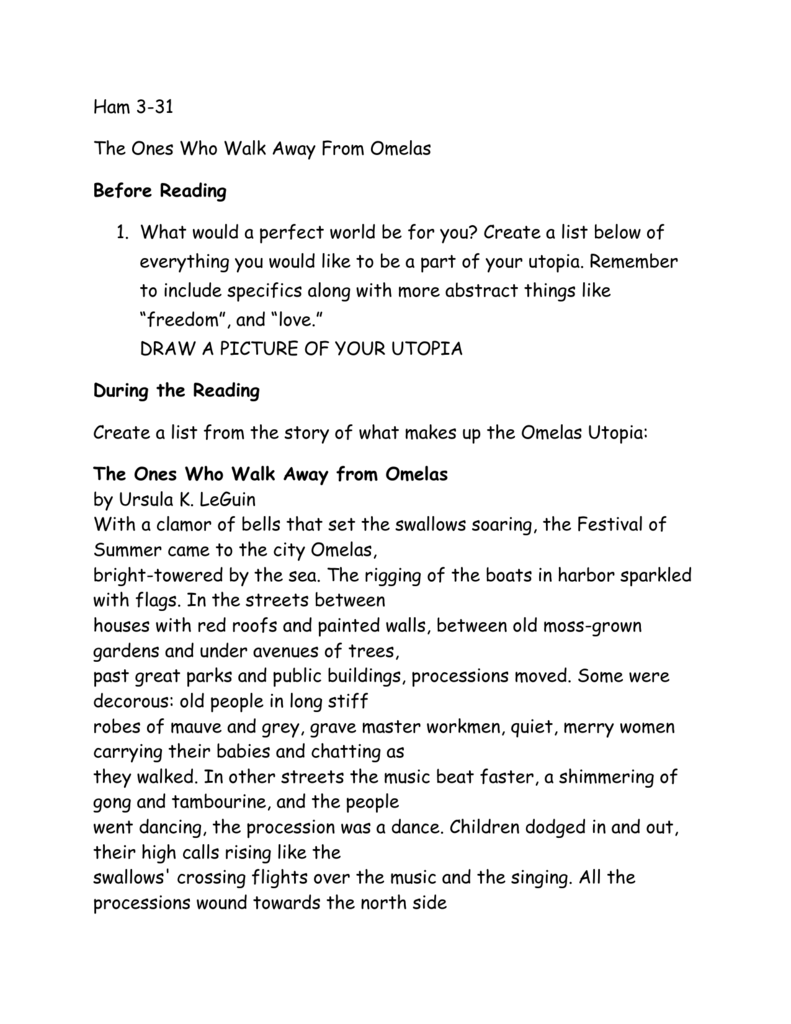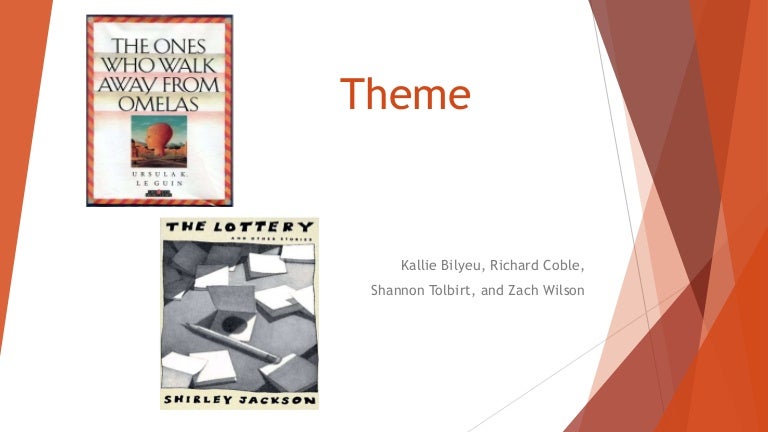


The most obvious reason for these references is that the rituals performed in both stories are suppose to have an effect on harvest. The men in “The Lottery” are “speaking of planting and rain, tractors and taxes”(para 3) and in “… Omelas,” the farmer’s market is described as nothing less than “magnificent”(para 3). I know many people who believe that farming is a way of life that is handed down from generation to generation, it is very much a tradition to them. The fact that both authors include references to farming may be due to the association between farming and tradition. For instance, in “The Lottery,” “someone gave little Davy Hutchinson a few pebbles”(para 76), he is then able to participate in the stoning of his own mother, and in “… Omelas,” the tradition “is usually explained to children when they are between eight and twelve”(para 10), and of course, the victim in this tale is a child. I also believe they are vital necessities in each story because they are taught and expected to carry traditions into the future. I see these children being used to symbolize perceived states of happiness in both stories. Jackson makes it easy for us to imagine their “boisterous play”(para 2), and Le Guin writes “their high calls rising like swallows’ crossing flights over the music and the singing”(para1). Children are an important focus in both stories. The reader is then left ill-prepared when the shocking, brutally violent, ritualistic traditions are exposed.

However, I believe the major similarity lies in the fact that these many pleasant details create a facade within each story. ” Although Le Guin’s environment seems more festive, all the folks in both stories are coming together for what seems to be enjoyable, even celebratory occasions. In “… Omelas there is music, dance, and special attire incorporated in the gathering, whereas in “The Lottery,” the women show up “wearing faded house dresses and sweaters.

Both stories also contain a gathering of townspeople. These descriptions (along with several others) provide positive connotations and allow the reader to relax into what eems to be a comfortable setting in either story.


 0 kommentar(er)
0 kommentar(er)
